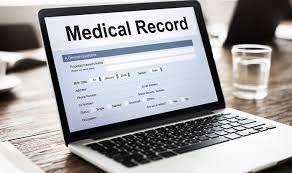The ecosystem of medical data is remarkably complicated, and it has been giving indications constantly to become more complex over time. Despite the existence of state laws on the ownership of clinical data or information, it’s still not clear who should own the data – hospitals/ physicians or patients? This particular debate regarding medical data ownership has been going on for ages. With the advent of the latest method of storing clinical information in electronic devices, the data ownership related concern has intensified.
The groups advocating patients believe that no one else except for patients should have access to their medical records. The sole demand of these groups has been the same: to give the ownership of healthcare data to patients. On the other hand, hospitals, nursing homes, doctors and several other stakeholders firmly believe that none other than the property owner/manager should own the valuable medical data.
Ownership of Medical Data
Aside from the Federal statutes, the state ones also demand that all patients must have seamless access to information related to the healthcare services they have obtained. The HIPPA Privacy Regulation clarifies that except for certain circumstances, patients should have the authorization and liberty to check and use their medical records anytime they wish. However, according to the stringent rule, patients are required to pay a very nominal price for accessing medical data.
According to the law, in as many as twenty-one US states, not patients but hospitals or doctors should hold the ownership of patients’ healthcare records. Although, a considerable number of medical experts believe both physicians and patients should be the owner of sensitive medical information. The type of commons is regarded by many sometimes as a shared resource. Therefore, as per this specific principle, both patients and healthcare professionals have the legitimate right to access confidential information within medical records.

Clinical Data is a Shared Resource
The HIPAA rule is still applicable irrespective of whether or not one practices medicine in a particular state, which clearly defines patients’ medical record ownership. Attempts have been made several times to bring an end to the data ownership conflict by invoking the principle referring to shared resources.
Medical records are a joint construction of (if not more) two parties. The record consists of everything that medical care professionals note down related to the development or deterioration of a patient’s condition. Similarly, the information that a medical report consists of is all about a patient’s symptoms, behaviors, diagnoses, fears and thoughts. Thus, it is understandable and clear enough that medical data indeed is a shared resource and should belong to the kind of commons.
Steps Affirming Patient Data Ownership
Interoperability might be one of the concerning issues for hospitals, nursing homes and clinics. However, rectifying it is possible by giving patients ownership of their medical data. Here are the three prime steps that support patient data ownership.
Setting up a standard medical care record can help contribute to better interoperability, both in a medical and semantic sense. Data keeps getting generated as long as patients put on wearables, and doctors keep collecting and storing data through applications that track the health of patients.
The creation of a data receipt every time a patient visits a clinical facility can help immensely. Apart from the visit summary, a medical care provider needs to provide patients with billing, diagnostic imaging reports, and other relevant information. Implementing the receipt procedure will require healthcare providers to make the EHR system automated.
Both patients and the concerning entities need to opt for a Data Use Agreement or DUA. The entities will store and manage patients’ health-related information. As per the contract, medical data managers must ensure patients the highest level of privacy and security besides seamless access to their medical records. Therefore, it is crucial to tailor the DUA for every unique patient.
With each passing year, the number of clinics, hospitals and nursing homes resorting to using sepStream® is increasing. This state-of-the-art medical imaging software solution is instrumental in producing an accurate report and storing all data it generates. Thus, aside from clinicians, patients can also obtain any specific information related to their diagnosis anytime that this software stores.